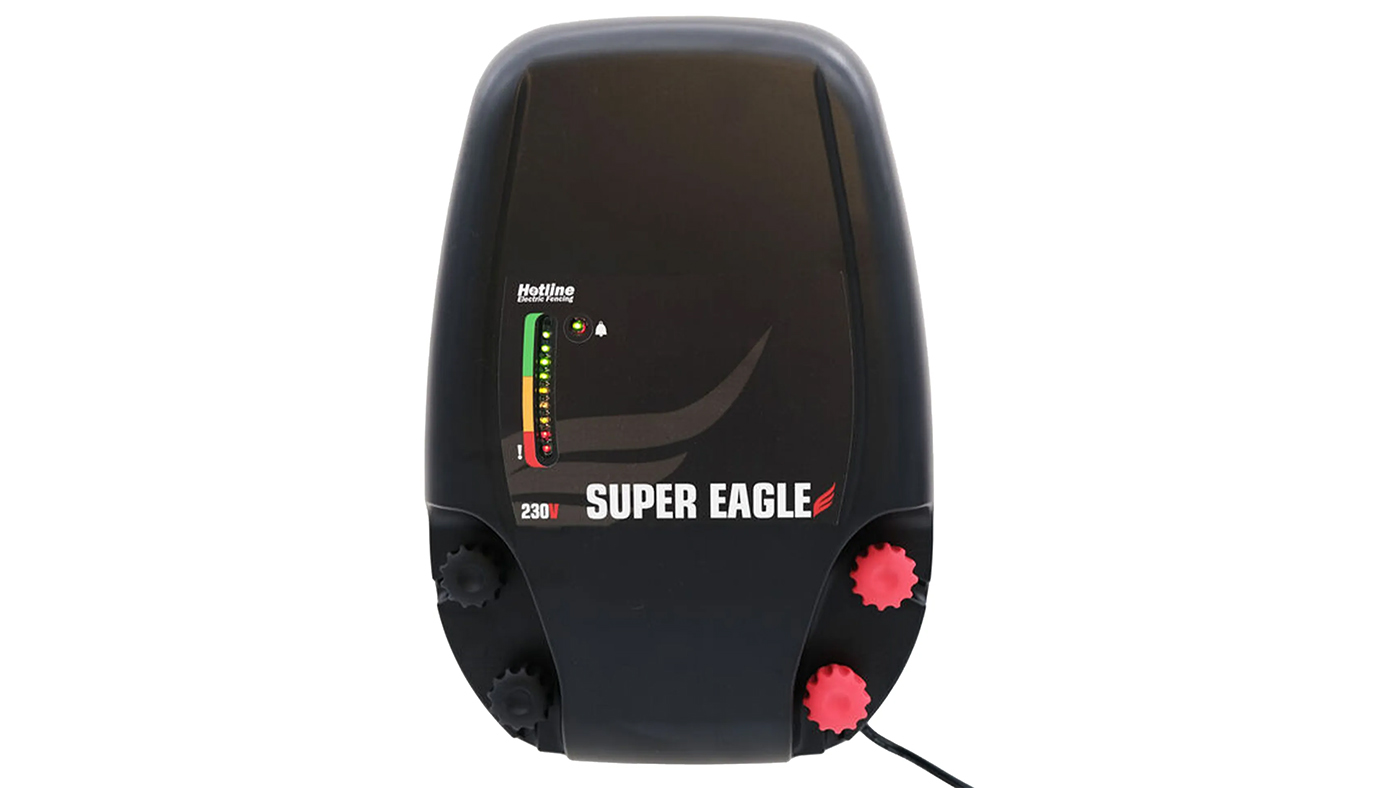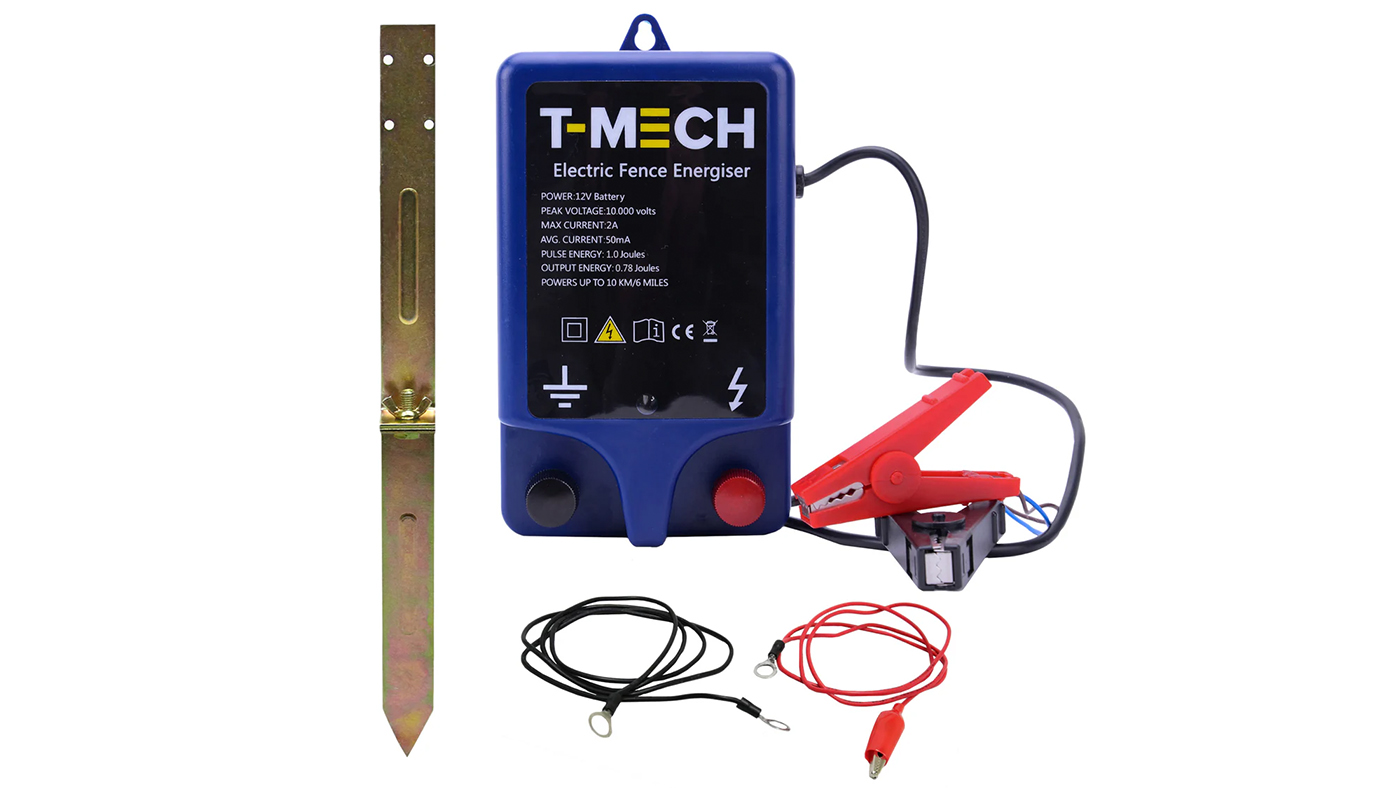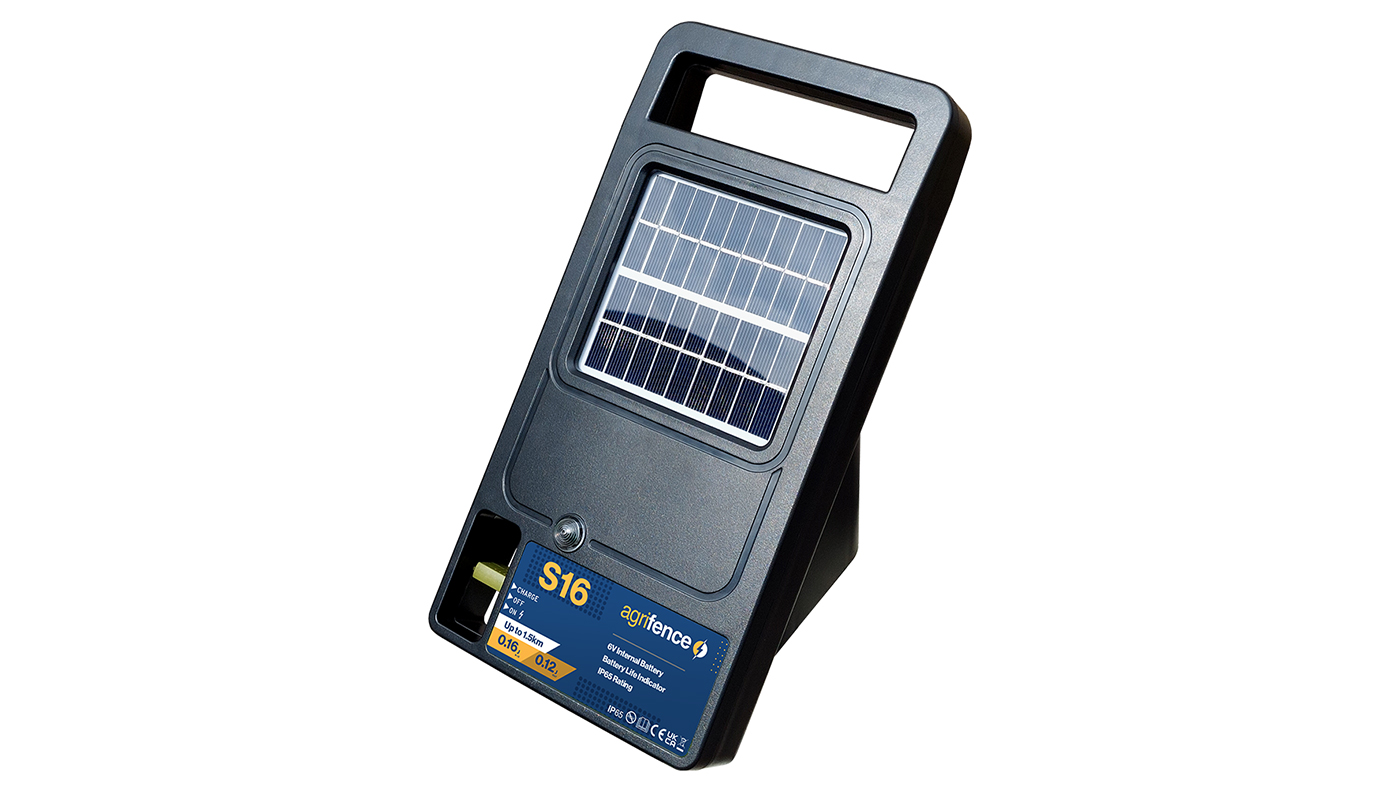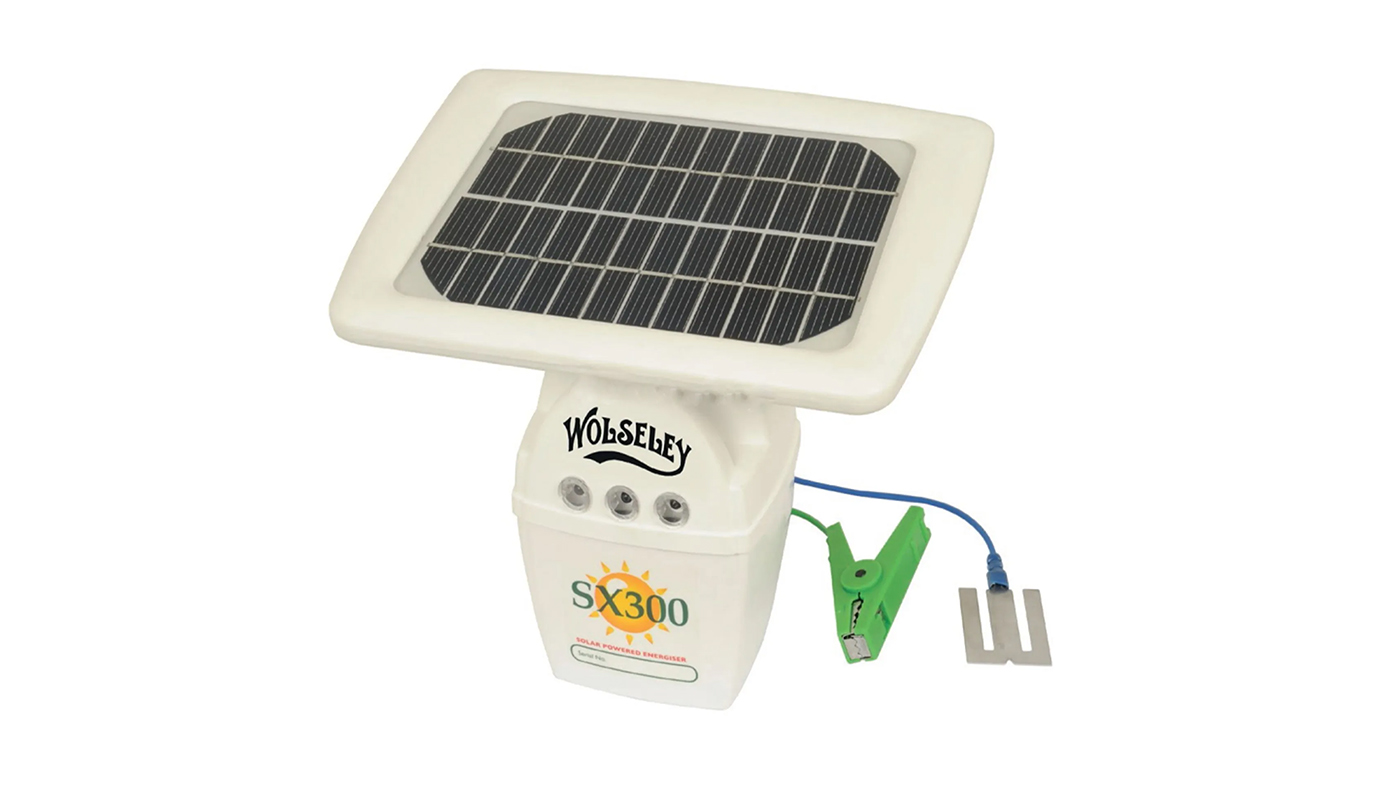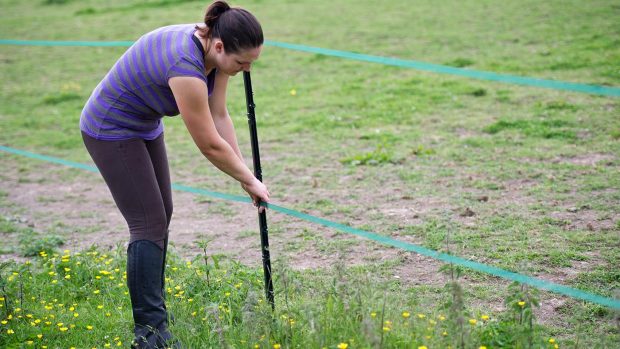The energiser is the heart of the electric fencing system and the best electric fence energisers for horses depend on your available power supply, the output required and the length of your fence. If you’ve got permanent electric fencing for horses and mains power nearby, a mains-powered energiser is the best option. A cable takes the power from the energiser to the fence – all you need to do is plug it in and switch it on. If your field is more remote and you don’t have access to mains, then a battery or solar energiser is your best option.
When selecting the best electric fence energisers for horses to meet your needs, it’s best to choose the most powerful energiser (highest Joules) you can afford for consistent power. And it’s best to err on the side of buying a more powerful unit than you initially think you need, keeping in mind that advertised power distances are based on ideal conditions and don’t account for vegetation reducing output. Calculate total fence length by multiplying the number of tape lines by the fence length (for example, a 1km fence with four tape lines is 4km of fencing).
Jump to:
- Mains powered electric fence energisers for horses
- Battery powered electric fence energisers for horses
- Solar powered electric fence energisers for horses
Best electric fence energisers for horses: mains, battery and solar
Mains powered energisers

Gallagher M120 Mains Fence Energiser
Distance powered: 8km
Power source: mains
Warranty: 5 years
Reasons to buy
- Easy to install
- Integrated lightning protection
- Indicator light on/off
- Possibility to add a back up 12V battery
Reasons to avoid
- If you are looking for a larger distance look at other models in the Gallagher range
This easy-to-install, entry-level, mains-powered energiser comes with a kit to attach it to a wall and has a pulse energy of 0.47J. It’s easy to use, has built-in lightning protection to prevent short circuits and can have a 12V battery attached to it as a back up – which is useful for yards with unsecured power supply.
XStop EL90 230v Mains Powered Energiser
Distance powered: 10km
Power source: mains
Reasons to buy
- Easy to use
- Weather resistant
- Great value
- Ideal for small to medium sized fields
Reasons to avoid
- Not the smartest looking unit
This weatherproof energiser kit can power up to 10km of fencing tape with 0.5J where mains power is available – just plug it in and off you go. It’s ideal for small to medium electric fence requirements, such as strip grazing. This is a complete kit that includes an earth stake, earth lead, fence connection clip, fence lead and mains lead.
Hotline Super Eagle Energiser
Distance powered: up to 30km
Power source: mains
Warranty: 5 years
Reasons to buy
- High and low power options
- Wall mount included
- LED fence performance monitor
- Can purchase a 12v battery for backup
Reasons to avoid
- Added expense of 12v battery for reliability during power shortages
This energiser is a powerful and reliable choice. It features dual output terminals, including high (2.4J) and low (0.7J) power options, which gives you flexibility.
It features a visual LED fence performance monitor and a 12V battery backup input for increased reliability during power failures (battery sold separately). It also includes a dual earth template for improved efficiency and a wall mount for simple installation. Backed by a 5-year warranty, this energiser ensures long-lasting performance and dependability.
Battery powered energisers
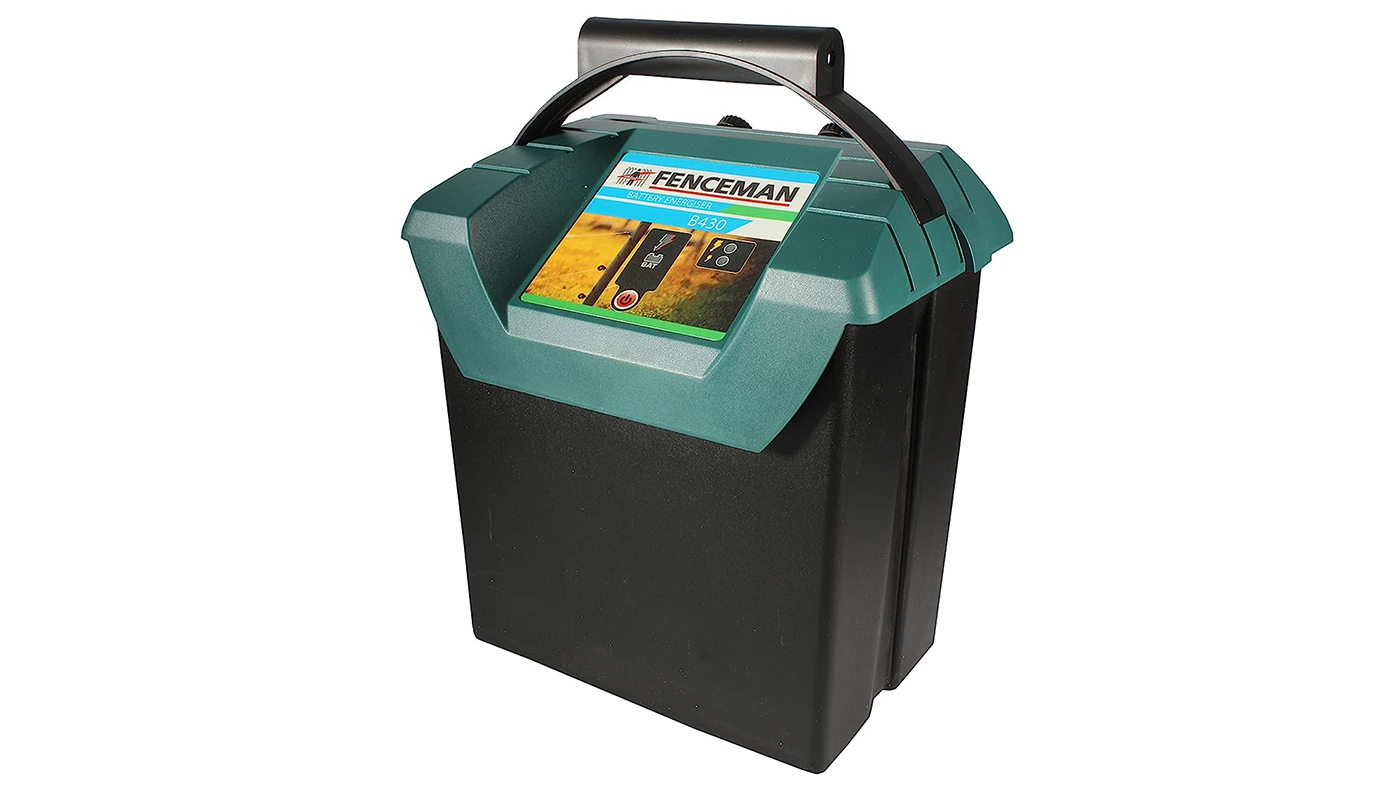
Fenceman B420 9V Energiser
Distance powered: 3km
Power source: battery
Warranty: 3 years
Reasons to buy
- Highly portable
- Ideal for strip grazing
- Complete kit
Reasons to avoid
- Non-rechargeable battery might not suit your needs
This 9V battery-powered energiser is good for smaller enclosures and has a battery-saving mode, which reduces the power but helps it last longer. Although the battery isn’t rechargeable, it’s easy to move around, which makes it good for strip grazing, and is also covered by a warranty.
Fenceman DP350B Energiser
Distance powered: Up to 3.5km
Power source: battery
Warranty: 2 years
Reasons to buy
- Integrated earth stake and stand
- LED indication light
- Can run off D-cell batteries (included) or a 12V battery
- Great for short fences and small areas
Reasons to avoid
- If you are looking for an energiser for bigger areas
This energiser can be powered by either 4 D-cell batteries or an external 12v rechargeable battery. It will power up to 3.5km on 12V (1km on 6V) and the pulse rate can be adjusted between 20–60 pulses/min. There is an LED indication light that blinks on every pulse and flashes rapidly when the battery is running low so you’ll never run out of power. It’s ideal for smaller paddocks and strip grazing.
H&H’s Georgia Guerin has been using this energiser for a number of years. She says: “I mostly use this for strip grazing, but I’ve also used it to electrify smaller individual paddocks within my three acre plot. I’ve use a 12V battery that is charged by a solar panel and kept in a box to make sure it’s watertight and easy to carry. The energiser is small and easy to move around when I need to, and I love how easy it is to change the pulse frequency.”
ShockRite SB120 Battery Powered Energiser
Distance powered: 6km
Power source: battery
Warranty: 3 years
Reasons to buy
- Complete setup with clips and earth stake
- Low battery indicator warning
- Built-in lightning protection
Reasons to avoid
- More crocodile clips to connect it up than others
This 1.5kg 1.2J energiser can power up to 6km of fencing tape. It has a low battery indicator and is made for permanent outdoor use with a special weatherproof membrane that protects the on/off switch. It has a three-year warranty.
T-Mech Electric Fence Energiser
Distance powered: 10km
Power source: battery
Warranty: 1 year
Reasons to buy
- Earth stake provided
- Compact size
- Powered by 12v battery
Reasons to avoid
- You want to use D-cell batteries
This energiser is powered by a 12V car or leisure battery, has a pulse energy of 1J and can cover larger, or multi-wire paddocks – up to 10km. It’s easy to set up and can be mounted on a fence or wall, it’s waterproof and has built-in lightning protection. It also only weighs 1.2kg, so it’s easy to move and set up in a new location.
XStop BA100 12V Battery Powered Energiser
Distance powered: Up to 20km
Power source: battery
Reasons to buy
- Easy to use
- Complete kit
- LED battery monitor
Reasons to avoid
- If you need a high energy output for your horse to respect the fence
This kit has everything you need to get started if you’re looking to power a medium-sized fence (up to 20km) from a battery. It’s easy to move around (weighing just 0.6kg) so is a great option for strip grazing, but it only delivers 1J so might not be strong enough to deter the most determined horses in all scenarios.
It has a multifunction LED that flashes green to indicate that the unit is operating correctly and flashes red when your battery is running low.
Solar powered energisers
Agrifence S16 Solar Powered Fence Energiser
Distance powered: 1.5km
Power source: solar
Warranty: 3 years
Reasons to buy
- No need to manually recharge
- Ready to use straight from box
- Pulse light
- Built in solar panel
Reasons to avoid
- Not mains rechargeable
The S16 is an ideal low-maintenance electric fence solution for smaller paddocks and dividing fences. The built in solar panel recharges the 6V internal battery allowing the energiser to operate without the need to manually recharge.
Supplied ready to use out of the box the energiser includes all you need to get started with a two-piece earth stake/mount post and connection leads. Complete with three-year warranty.
XStop Solar 0040 Solar & Battery Powered Energiser
Distance powered: 2km
Power source: solar and battery
Reasons to buy
- Complete kit with earth stake, leads and USB charging cable
- Low maintenance
- Durable
- Can top up charge with mains charge if and when needed
Reasons to avoid
- If you need to power a larger area
This weatherproof solar-powered energiser kit can power up to 2km of fencing with 0.4J. It’s also rechargeable via USB if a manual charge is required in times of very dark weather.
Wolsely SX300 Solar Energiser
Distance powered: Up to 20km
Power source: solar
Warranty: 2 years
Reasons to buy
- Combines solar and battery for continuous operating
- Indicator light for solar and battery
- Economical to run
Reasons to avoid
- Earth stake is not supplied with energiser you have to purchase this separately
The SX300 seamlessly combines solar power, rechargeable batteries, and backup “C” cell batteries to ensure continuous operation, even at night and on cloudy days.
With its ability to power up to 20km of fence line and run economically for 12 months without changing the C-cell batteries, it is an efficient and reliable choice. Key features include nighttime energy saving, indicator lights for solar output and battery condition, and a robust two-year warranty.
Power sources energisers: the specifics
Mains powered energisers
Pros
- Reliable power source with no battery concerns
- Stronger output
- Suitable for larger areas of fencing and multiple horses
Cons
- Must have a mains power source to run it
- Limited portability
9V/12V battery powered energisers
Pros
- Portable and flexible
- Quick installation
- Energy source is not reliant on mains power
Cons
- Batteries need recharging and need regular check-ups
Solar powered energisers
Pros
- Compact design ideal for temporary fences
- Solar cells keep your battery charged
- Low operating costs
Cons
- Not as powerful as mains energisers in the same price range
Battery vs solar energisers
If you don’t have access to mains power, you’ll be choosing between a battery or solar-powered electric fence energisers for horses. Solar-powered energisers do have a battery, but this is charged by the sun rather than requiring you to replace the batteries.
Battery-powered electric fence energisers are a popular choice for strip grazing and temporary fencing as they are very portable. Some are powered by dry-cell 9V disposable batteries, so you will need to consider the cost of replacing them as they run out. Others are powered by rechargeable 12V batteries, which can power longer fences at a higher voltage. You could use a car battery, but a purpose-designed leisure battery is designed to give a steady output over time, while a car battery will dwindle quite quickly. The higher the Ah of the battery, the longer you can leave it between recharges.
Solar-powered energisers use energy from the sun to power your fencing setup. They tend to have a higher initial cost but are cheaper in the long run and assuming they’re in a good position to receive enough light, you don’t have to worry about making sure they’re charged.
How many Joules should an electric fence have for horses?
Electric fence energisers for horses work by delivering an electric shock to any horse that touches the fence the energiser is attached to. Joules represent the energy output of the energiser and put simply the higher the joules the stronger the shock will be.
It’s essential to strike a balance between effectiveness and safety, ensuring that the fence provides enough deterrent for the horses without causing harm.
The ideal number of Joules for an electric fence for horses can also vary depending on factors such as the size of the pasture, the behaviour of the horses, and the level or type of vegetation growth in the paddock.
However, generally, electric fences for horses typically have an output of around 0.5–1.5 Joules.
How many Volts should a horse fence be?
Voltage is a measure of the electric potential energy per unit charge between two points in an electric circuit. A higher voltage will provide a stronger shock, but it also relates to the distance over which the electric shock can effectively deter horses. Higher voltage levels typically allow the pulse energy to travel greater distances along the fence line.
The voltage of electric fencing used for horses should typically be between 2,000–10,000 volts to effectively deter horses.
The exact voltage required can vary based on factors such as the length of the fence, the type of insulators and conductors used, and the energy output of the electric fence energiser.
It’s also important that regular maintenance and testing of the fence system are carried out to ensure consistent voltage levels and proper functionality.
You might also like:

Electric fencing for horses – everything you need for a temporary setup or strip-grazing

Strip grazing – all you need to know to get started

Grazing muzzles – what are your options?

Subscribe to Horse & Hound magazine today – and enjoy unlimited website access all year round
Horse & Hound magazine, out every Thursday, is packed with all the latest news and reports, as well as interviews, specials, nostalgia, vet and training advice. Find how you can enjoy the magazine delivered to your door every week, plus options to upgrade your subscription to access our online service that brings you breaking news and reports as well as other benefits.



